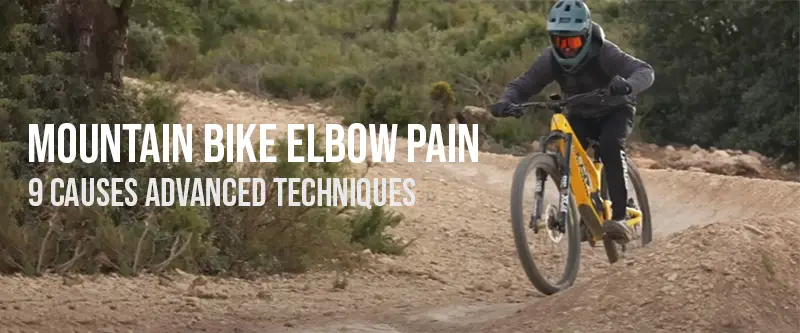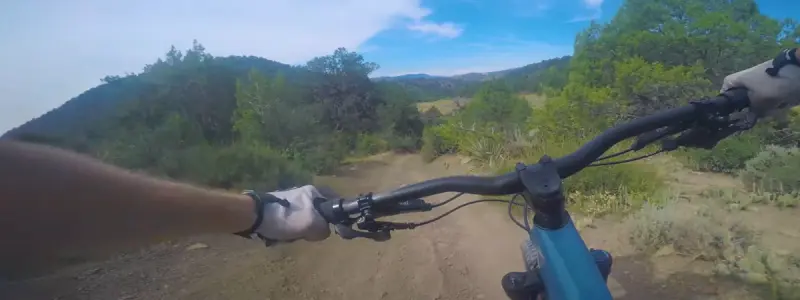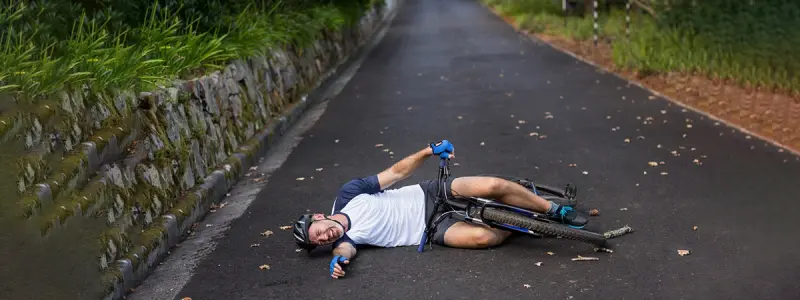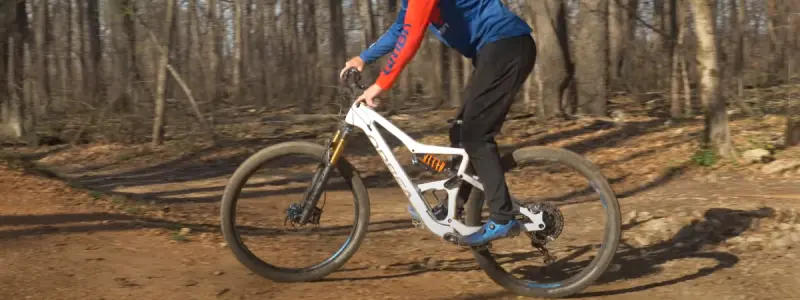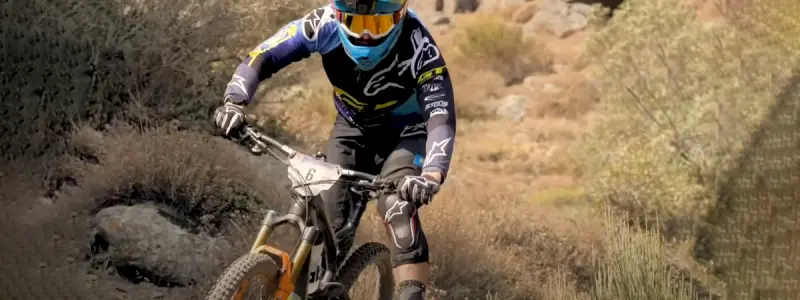Elbow pain is often caused by overuse or injury. Sports, hobbies, and jobs often require repeated wrist, arm, or hand movements. Elbow pain can result from problems with bones, muscles, tendons, ligaments, or joints. Arthritis can occasionally cause elbow pain.
Athletes often refer to this injury as “tennis elbow” or “biker’s elbow,” but its official name is “lateral epicondylitis.” The condition is usually caused by overuse or strain of the lateral epicondyle’s tendons.
We will discuss the factors that cause mountain bike elbow pain and the advanced techniques one can use to prevent and manage the condition.
Mountain Bike Elbow Pain: 9 Causes
One of the most common injuries sustained by mountain bikers is elbow pain. We will discuss the various risk factors contributing to mountain bike elbow pain and how to avoid them.
Repetitive Motions and Improper Technique
Repetitive motions and poor technique are the leading cause of elbow pain in mountain bikers. Cyclists who sustain this type of injury often need to adequately warm up before embarking on a ride or execute the proper technique when performing activities such as braking.
Some of the Repetitive motions and improper techniques that can cause elbow pain in mountain bikers include:
- Overuse of the extensor muscles.
- Inadequate balance and control.
- Refrain from stretching before biking.
- Failure to maintain proper posture.
The Type of Bike and Equipment Used
Equipment and bike type can also significantly impact a rider’s likelihood of elbow pain. Mountain bikers with poorly fitted bikes or inadequate gear, such as handlebar grips or gloves, may be more prone to elbow pain.
Overuse and Incorrect Fit of Bike Components
Incorrect fit of bike components and overuse can lead to elbow pain in mountain bike riders. Cyclists who use their bikes frequently or need to take the time to ensure that their bikes fit correctly may put additional stress on their elbows during cycling. Some of the factors that can contribute to elbow pain in this category include:
- Inadequate tire pressure.
- Poor shock absorbers.
- Ill-fitted saddle position.
- Non-adjustable handlebars.
Pre-existing Medical Conditions and Physical Limitations
Medical conditions and physical limitations also contribute to elbow pain in mountain bikers. Cyclists who suffer from degenerative arthritis or chronic elbow pain may find that mountain biking exacerbates their condition. Some of the medical conditions that may contribute to elbow pain are:
- Tennis elbow.
- Carpal tunnel syndrome.
- Impingement syndrome.
Overuse and Repetitive Motion Injuries
Overuse and repetitive motion injuries may also cause elbow pain. Cyclists who train excessively or use their bikes for extended periods without proper rest may experience overuse injuries in the elbow. Repetitive motions that cause elbow pain in this category are:
- Frequent braking.
- Long-term gripping of handlebars.
- Inadequate armrest.
- Inadequate shock-absorbing gloves.
Trauma from Falls or Accidents
Trauma from falls or accidents may lead to elbow pain. Cyclists who fall off their bikes or experience collisions may injure their elbow, leading to acute or chronic pain. Trauma can lead to:
- Ligament.
- Dislocation.
- Fractures.
- Contusion.
Poor Body Position and Technique
Poor body position and technique are also leading causes of elbow pain and shoulder pain among mountain bikers. Cyclists who cycle with poor body position and technique may strain their elbows, leading to pain and discomfort. Some of the imperfect body positions and techniques include:
- Excessive elbow bending.
- I need a more adequate grip.
- Riding with locked elbows.
- Overreaching.
Improper Equipment and Gear
Improper equipment and gear can lead to elbow pain. Cyclists who use bikes that do not fit their body size or have inadequate gear, such as gloves and elbow pads, are more susceptible to elbow pain. Some of the improper equipment and gear that can contribute to elbow pains include:
- Inadequate handlebars and grips.
- Low-quality shock absorbers.
- Ill-fitted saddle.
- Non-functional elbow pads.
- Worn-out Gloves.
Impact on the Elbow Joint from Falls or Collisions
Falls or collisions may impact the elbow joint, leading to elbow pain. Mountain bikers who experience collisions with trees or other objects or falls may land on their elbow. The elbow can bear the brunt of the impact, leading to pain and discomfort. The type of impact may lead to:
- Severe bruising.
- Fractures.
- Dislocation.
Elbow Pain on Mountain Bikes: Advanced Techniques
Whether you are a seasoned rider or a beginner, understanding advanced techniques and recommendations for preventing mountain bike elbow pain is essential. We will explore ways to improve your riding technique and develop a personalized training plan to avoid pain in your elbow while mountain biking.
Advanced Riding Techniques to Prevent Elbow Pain:
- Proper Body Positioning: One of the most effective ways to prevent elbow pain while mountain biking is to maintain a correct body position. This includes positioning your center of gravity over the pedals, keeping your elbows slightly bent, and engaging your core muscles.
- Use of Suspension: A bike with a proper suspension can absorb the impact of rough terrain and reduce the strain on your arms. Adjusting your suspension settings to suit the particular trails you are taking is crucial to reducing elbow pain.
- Brake Control: Proper brake control can also help prevent elbow pain. It is essential to use your brakes effectively to avoid sudden stops and control your speed, keeping in mind that excessive braking can also lead to strain on your arms.
Coaching or Training Recommendations
- Analysis of Your Riding Style: Working with a coach or trainer can help a professional analyze your riding style. They can identify areas where your technique can improve and help you adjust to prevent elbow pain.
- Training Program: Developing a training program will help you build muscle strength to improve your technique and prevent elbow pain. This program can include exercises to strengthen your core, upper body, and conditioning.
Importance of Developing a Personalized Training Plan:
- Targeting Specific Weaknesses: Developing a personalized training plan can help you target weaknesses contributing to elbow pain. This includes identifying underused or overused muscles during riding and explicitly working on those areas.
- Preventing Injuries: A personalized training plan can also help to prevent future injuries, not just elbow pain. By building strength and working on proper technique, your body will be better equipped to handle the demands of mountain biking.
Conclusion
Mountain bike elbow pain is an unfortunate but common condition affecting riders of all levels and abilities. Riders can significantly reduce the likelihood and severity of elbow pain by addressing risk factors such as repetitive motions, improper technique, and equipment usage and implementing advanced riding techniques and personalized training plans.
Perhaps most importantly, we must prioritize our health and safety while pursuing our passion for mountain biking. We can enjoy this fantastic sport by taking the necessary preventative measures and seeking proper care.
FAQs
What Is The Recovery Time for Mountain Bike Elbow Pain?
Tennis elbow treatment works best when it starts as soon as symptoms appear. A long rest from the activity that caused the problem allows the tiny tears in the tendon to heal. You will probably feel better in a few weeks, but the tendon may take 6 to 12 months to heal.
What Are The Best Mountain Biking Stretches?
Stretching before mountain biking is crucial to prevent injuries, improve flexibility, and enhance performance. Some of the best mountain biking stretches include hamstring, quad, calf, hip, and back.
Take 20-30 seconds to hold each stretch on both sides before hitting the trails. Additionally, dynamic stretching, such as leg swings and arm circles, can also be beneficial for warming the body and improving the range of motion.


